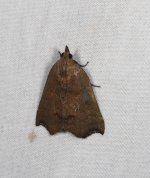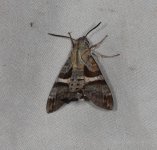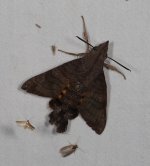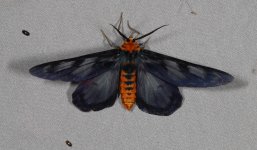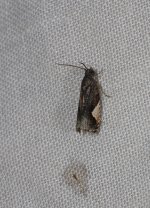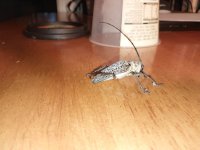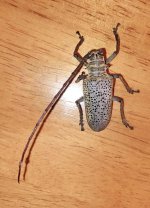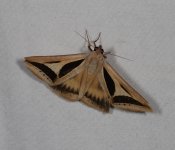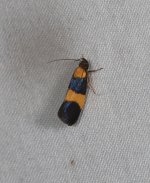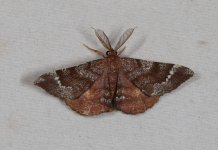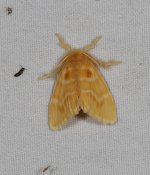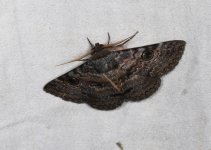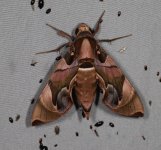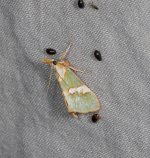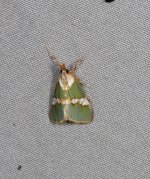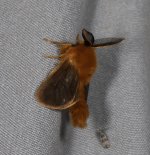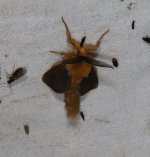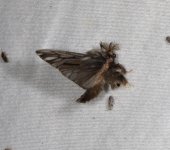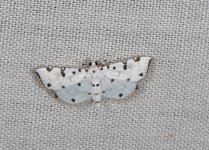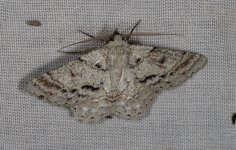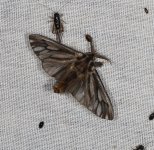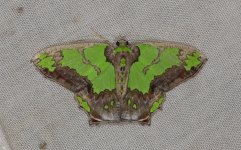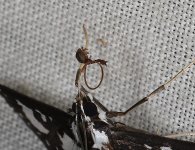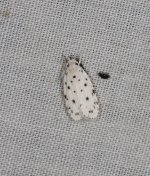I didn't pay duty when we emigrated, and the price back in 2011 was remarkably cheap to get a 20 foot container, packed and loaded by Pickfords International from a remote farm in NE Scotland to Brisbane, far less than I had anticipated - used a well known company as it made customs in Aus very easy and cheap as they trusted the inventory that Pickfords supplied and only two boxes in the whole container were opened and one item, a Christmas wreath for the door that had been given to us and was in my eyes horrible, was seized as it had a pine cone on it. Were offered the chance for it to be gamma radiated at $350 AUD or destroyed FOC...I gleefully chose the later!Not that I know of and now we're a third country from the EU, I'd have to pay duty too.
-
Welcome to BirdForum, the internet's largest birding community with thousands of members from all over the world. The forums are dedicated to wild birds, birding, binoculars and equipment and all that goes with it.
Please register for an account to take part in the discussions in the forum, post your pictures in the gallery and more.
You are using an out of date browser. It may not display this or other websites correctly.
You should upgrade or use an alternative browser.
You should upgrade or use an alternative browser.
Australian Moths and other garden observations (2 Viewers)
- Thread starter Atropos
- Start date
More options
Who Replied?The long weekend turned into a hugely unexpected monster weekend with over 1200 photos of approx 350 species spread over two nights - have just finished my initial sort of Sunday and with 150+ photos of approx 60+ species tstill to be ID'd it is already the best night diversity wise I have had in a long time with 1500 individuals of over 260+ species. The conditions were challenging at times and my Canon only came out for the last hour so the quality of the images is not as good as I would like but here are a few of the highlights
Agastophanes zophoxysta (Epipaschiinae) - my first record for the Cape of this species and my first since 2016
Gonodotis orthotoma (Geometridae, Ennominae) - an unusual colour form of this large and impressive species
Lophoruza diversalis (Erebidae, Boletobiinae) - my second record for the Cape of this scarce species
Problepsis apollinaria (Geometridae, Sterrhinae) - my first record for the Cape and possibly the first Cape record away from the eastern seaboard
Scopelodes nitens (Limacodidae) - a new species for me and only the fourth Australian record as far as I can tell.
Trichophysetis crocplaga (Crambidae, Cybalomiinae) - a new species for me, there are fewer than ten published records for this species.
Agastophanes zophoxysta (Epipaschiinae) - my first record for the Cape of this species and my first since 2016
Gonodotis orthotoma (Geometridae, Ennominae) - an unusual colour form of this large and impressive species
Lophoruza diversalis (Erebidae, Boletobiinae) - my second record for the Cape of this scarce species
Problepsis apollinaria (Geometridae, Sterrhinae) - my first record for the Cape and possibly the first Cape record away from the eastern seaboard
Scopelodes nitens (Limacodidae) - a new species for me and only the fourth Australian record as far as I can tell.
Trichophysetis crocplaga (Crambidae, Cybalomiinae) - a new species for me, there are fewer than ten published records for this species.
Attachments
-
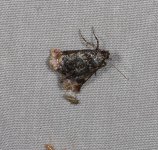 Agastophanes zophoxysta 09 04 2023.JPG1.1 MB · Views: 3
Agastophanes zophoxysta 09 04 2023.JPG1.1 MB · Views: 3 -
 Gonodontis orthotoma 09 04 2023 (2).JPG796 KB · Views: 3
Gonodontis orthotoma 09 04 2023 (2).JPG796 KB · Views: 3 -
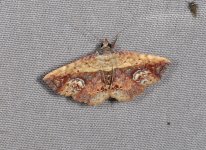 Lophoruza diversalis 09 04 2023 (2).JPG1.6 MB · Views: 3
Lophoruza diversalis 09 04 2023 (2).JPG1.6 MB · Views: 3 -
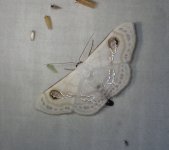 Problepsis apollinaria 09 04 2023 (2).JPG917.9 KB · Views: 3
Problepsis apollinaria 09 04 2023 (2).JPG917.9 KB · Views: 3 -
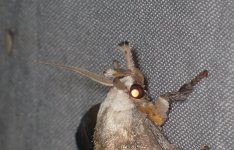 Scopelodes nitens 09 04 2023 (5).JPG645.9 KB · Views: 2
Scopelodes nitens 09 04 2023 (5).JPG645.9 KB · Views: 2 -
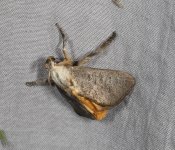 Scopelodes nitens 09 04 2023 (1).JPG1.8 MB · Views: 3
Scopelodes nitens 09 04 2023 (1).JPG1.8 MB · Views: 3 -
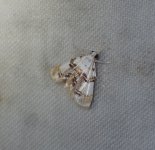 Trichophysetis crocoplaga 09 04 2023 (2).JPG406.9 KB · Views: 3
Trichophysetis crocoplaga 09 04 2023 (2).JPG406.9 KB · Views: 3
Went out again last night, the conditions were kinder (for me) but less good for moths being dry and clear skies. Sadly the night ended in what may end up being a very expensive manner with the genny failing. My rudimentary mechanical skills this morning have not managed to get it fired up again so a trip to the mechanics on Monday is called for. Hopefully just a simple issue - it is an old genny and does need TLC regularly and last weekend was very hard on it I am not sure.....
Still not heard back regarding my genny which is a bit disconcerting...will chase them tomorrow morning.
Cutting my mothing teeth in the UK Pyralids were on the whole small and often subtly marked, fast forward to the Tropics that is most definitely not the case and there are some large species that I find very misleading. A case in point being this non descript basically brown moth from last weekend. My initial thought in the field was that it was something in Hypocalinae, it was approx 2-3cm in length and I thought either a Hyperlopha or Hypocala species but not one I knew. I took a photo and between checking that it was in focus and looking back to the sheet the moth vanished. On closer inspection of the photo back home I realised that the whilst the wing shape was reminiscent of Hyperlopha the palps and overall pattern were closer to Hypocala. I then noticed the position of the antennae, parallel to the body above the wings, and realised that this was most likely a Pyralid of some description, probably a Macna species. Most of the brown Macna species remain undescribed but I think that this one is Macna coelocrossa (Pyralidae, Chrysauginae)
Cutting my mothing teeth in the UK Pyralids were on the whole small and often subtly marked, fast forward to the Tropics that is most definitely not the case and there are some large species that I find very misleading. A case in point being this non descript basically brown moth from last weekend. My initial thought in the field was that it was something in Hypocalinae, it was approx 2-3cm in length and I thought either a Hyperlopha or Hypocala species but not one I knew. I took a photo and between checking that it was in focus and looking back to the sheet the moth vanished. On closer inspection of the photo back home I realised that the whilst the wing shape was reminiscent of Hyperlopha the palps and overall pattern were closer to Hypocala. I then noticed the position of the antennae, parallel to the body above the wings, and realised that this was most likely a Pyralid of some description, probably a Macna species. Most of the brown Macna species remain undescribed but I think that this one is Macna coelocrossa (Pyralidae, Chrysauginae)
Attachments
Two Macroglossum species from last weekend. Macroglossum errans (on the left) has been a regular feature this Wet season but this was the first Macroglossum vacillans (on the right) that I have seen for several months
Attachments
Due to stronger winds than desirable I was not able to trap in my normal location last night and had to go to one of my other sites deeper into the Bush. This site is not as productive as my main site and last night was no exception with roughly 120 species found (compared to over 220 most nights at my normal site) the majority of which were micros which will take far longer for me to track down IDs for. However one notable exception was Dysphania numana (Geometridae, Geometrinae) which with a wingspan of 8cm+ is definitely not small! I rarely catch this species on the sheet as it predominantly flies in the late afternoon (hence its widely used "common" name of Four O'Clock Moth) but last night there were two individuals on the sheet - I have never caught two in a night before!
Attachments
Statherotis amaeboea (Tortricidae, Olethreutinae), a new species for me from last night, and as far as I can find the first published record apart from the specimens on BOLD and the first live photo. The specimens on BOLD come from PNG and Queensland. The four Qld records range from 1981 to 2008, all from the eastern seaboard of the state from as far south as Eugenella to Mt Tozer on Cape York.
Attachments
Trying to catch up on my back log of photos from this month - haven't had time to add anything to my database since last year, I am really hoping (NOT) for a cold Dry season so I am not tempted to go out as much and can catch up on the office based side of things but it wont happen!
Here are a few from the last couple of weekends
Donuca castalia (Erebinae, Catocalini) - a regular visitor to the sheet, catch it in small numbers most nights I go out.
Euproctis emprepes (Erebidae, Lymantrinae) - a new species for me
Hyposidra janiaria (Geometridae, Ennominae) - a regular on the sheet
Telecrates basileia (Oecophoridae, Xyloryctinae) - a new species for me from a couple of weekends ago
Trigonodes cephise (Erebidae, Erebinae) - prior to the last couple of months this was a scarce visitor to the sheet with perhaps one or two a year, since March this year I have caught this numerous times including two on one occasion.
Here are a few from the last couple of weekends
Donuca castalia (Erebinae, Catocalini) - a regular visitor to the sheet, catch it in small numbers most nights I go out.
Euproctis emprepes (Erebidae, Lymantrinae) - a new species for me
Hyposidra janiaria (Geometridae, Ennominae) - a regular on the sheet
Telecrates basileia (Oecophoridae, Xyloryctinae) - a new species for me from a couple of weekends ago
Trigonodes cephise (Erebidae, Erebinae) - prior to the last couple of months this was a scarce visitor to the sheet with perhaps one or two a year, since March this year I have caught this numerous times including two on one occasion.
Attachments
Considering how bright the moon is at the moment the last two weeks have been remarkably productive - helped by some unexpected light rain one night. The Wet season is officially over now and so numbers and diversity will drop off steadily till October I suspect when the rains may start again (with luck).
Here are a few of the highlights that I have got round to processing...
Anassodes mesozonalis (Pyralidae, Chrysauginae) - this was a species that I have been hoping to catch for a while now. A new species for me, there are less than ten published records for Australia with only a couple from Queensland
Conogethes tharsalea (Crambidae, Spilomelinae) - my favourite member of this genus
Daphnis protrudens (Sphingidae) - I have caught five individuals of this species this Wet, it remains one of if no my absolute favourite hawks
Eumeta variegata (Psychidae) - first for a while.
Here are a few of the highlights that I have got round to processing...
Anassodes mesozonalis (Pyralidae, Chrysauginae) - this was a species that I have been hoping to catch for a while now. A new species for me, there are less than ten published records for Australia with only a couple from Queensland
Conogethes tharsalea (Crambidae, Spilomelinae) - my favourite member of this genus
Daphnis protrudens (Sphingidae) - I have caught five individuals of this species this Wet, it remains one of if no my absolute favourite hawks
Eumeta variegata (Psychidae) - first for a while.
Attachments
I have been away on holiday visiting our daughter down south on the Gold Coast so have had no opportunities to trap for the majority of May. Got back to the warmth of the Cape on Thursday night and was able to go out trapping on Friday (and with luck will be able to get out again on Sunday). It was a much cooler night by my standards with temperatures dropping to 21oC by the time I packed up at 0100 but the sheet was still very productive although it was noticeable that being in the Dry there were more micro-moths around than there are in the Wet season. One family of macros that was very well represented were Psychidae with seven individuals caught. At least four of them were of a known but undescribed Lomera species and there was a single Cryptothelea persimilis (although an ongoing review of all Australian Psychidae being carried out by a friend of mine will be moving this to Clania when his paper is published hopefully later this year) as well as two others that I have not looked at yet.
Attachments
Managed to get out trapping last night, sadly the weather gods were against me and by 1030 the temperature had dropped to a chilly 19o and very windy, I know for many UK moth-ers this would seem a fantastic temp to trap in but for me in the Tropics it was cold and last night was the first time I had been happy that I was in a long sleeved shirt because I was cold! That said the 3+ hours I was out were quite productive, time is against me at the moment and I have not started to sort the photos yet and as I am going away for three nights trapping at Kutini-Payamu this week it is highly likely that not much will get done till next week. That said I have plucked four of the highlights out to share as I have not posted for a while.
Cryptothelea persimilis (Psychidae) - in addition to this individual there were three of the undescribed Lomera as well
Gnathothlibus australiensis (Sphingidae) - have not been catching many many Gnathothibus just recently so was pleased when this male turned up allowing me to ID it to species. You can clearly see the hairless front tarsi in this photo making this australiensis rather than eras.
Hypodoxa conspurcata (Geometridae, Geometrinae) - only my third record of this more southern species, all have been this calendar year
Pycnarmon meritalis (Crambidae, Spilomelionae) - my third specimen this year
Cryptothelea persimilis (Psychidae) - in addition to this individual there were three of the undescribed Lomera as well
Gnathothlibus australiensis (Sphingidae) - have not been catching many many Gnathothibus just recently so was pleased when this male turned up allowing me to ID it to species. You can clearly see the hairless front tarsi in this photo making this australiensis rather than eras.
Hypodoxa conspurcata (Geometridae, Geometrinae) - only my third record of this more southern species, all have been this calendar year
Pycnarmon meritalis (Crambidae, Spilomelionae) - my third specimen this year
Attachments
Got back from another three fantastic nights trapping at Kutini-Payamu on Saturday and have started the slow and laborious process of editing the 1500+ photos and IDing the specimens. I will add posts as and when I can but thought I would start off with two species that as far as I can tell have not been photographed alive before
Agathia kuehni (Geometridae, Geometrinae) - I can only find three published Australian records for this species, 1974, 1986 and 1998. Listed as occurring in PNG but apparently "rare"
Pachythrix mniochlora (Noctuidae, Hadeninae) - I can only find three other published Australian records for this species, two from 1988 and a single from 1989. Also occurs in PNG.
Agathia kuehni (Geometridae, Geometrinae) - I can only find three published Australian records for this species, 1974, 1986 and 1998. Listed as occurring in PNG but apparently "rare"
Pachythrix mniochlora (Noctuidae, Hadeninae) - I can only find three other published Australian records for this species, two from 1988 and a single from 1989. Also occurs in PNG.
Attachments
It can take a long time to track down IDs! I first saw this in May 2022 and my initial thought given the colouration and pattern was that it was an Ethmia (Depressariidae) but the palps and posture was not right so I labelled it as a Depressariidae species and have been looking, unsuccessfully, for something closer than just family ever since. Fast forward to last week when I saw it again and via a FB group we have found its ID, Odites albidella (Xyloryctidae) although its exact placement is a bit uncertain. This appears to be a new species for Australia, it occurs in New Guinea and given how many species do make it down to the top of the Cape it is not unreasonable to assume that it has been missed, we are not exactly heaving with moth-ers up here!
So the story gets more complicated as there is an undescribed species of Xyloryctidae - Hylypnes ANIC8 that looks identical to albidella. I am currently talking to the Aussie expert on this family to see if he can shed any light on this, he is named as the identifier for the Odites but not for the Hylypnes....
UPDATE - so the expert in Australian Xyloryctidae is quite happy that this is Odites albidella and thinks as I do that the specimens labelled as Hylypnes sp ANIC8 on BOLD are in fact albidella as well but there is no sequencing data from albidella to compare
So the story gets more complicated as there is an undescribed species of Xyloryctidae - Hylypnes ANIC8 that looks identical to albidella. I am currently talking to the Aussie expert on this family to see if he can shed any light on this, he is named as the identifier for the Odites but not for the Hylypnes....
UPDATE - so the expert in Australian Xyloryctidae is quite happy that this is Odites albidella and thinks as I do that the specimens labelled as Hylypnes sp ANIC8 on BOLD are in fact albidella as well but there is no sequencing data from albidella to compare
Attachments
Last edited:
Similar threads
Users who are viewing this thread
Total: 3 (members: 0, guests: 3)




